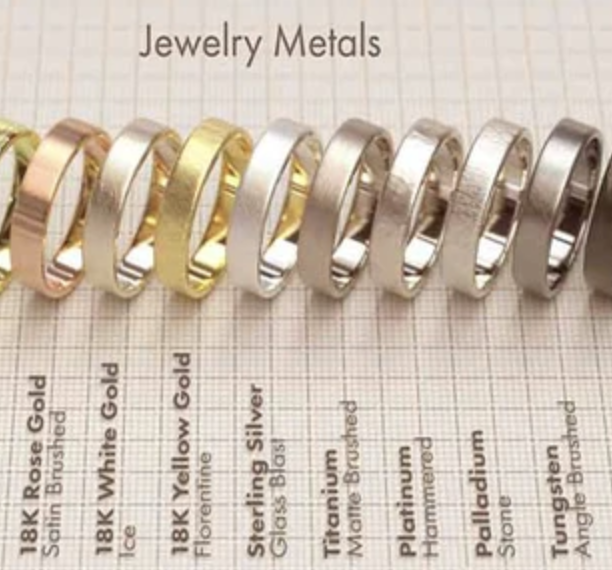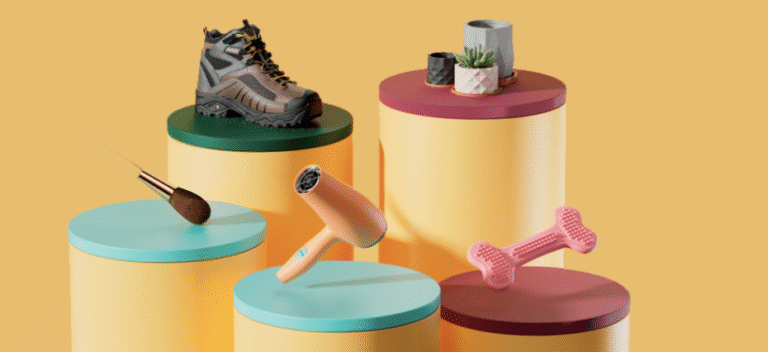15 Types of Safe Jewelry Metals & Alloys
When it comes to choosing jewelry, beauty and design often steal the spotlight. But there’s one more thing just as critical: safety.
For people with sensitive skin or metal allergies, the wrong jewelry can lead to redness, itching, or even painful reactions.
Thankfully, not all metals are created equal. There are a variety of safe jewelry metals and hypoallergenic alloys that make it easy to look stylish without compromising on comfort.
In this article, we’ll explore 15 of the safest materials to wear on your skin—whether you’re into rings, necklaces, bracelets, or earrings.
Table of Contents
Introduction to Safe Jewelry Metals
Why Safety Matters in Jewelry Materials
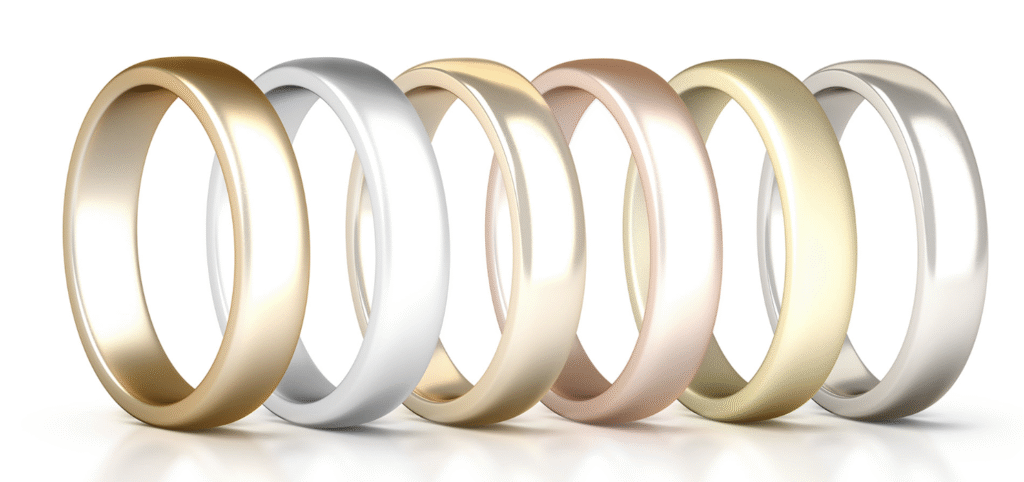
Ever worn a cute pair of earrings only to find your lobes red and itchy hours later? You’re not alone. Thousands of people suffer from metal allergies—especially to nickel, which is found in many jewelry pieces.
Safe metals matter not just for comfort, but for long-term skin health. Constant exposure to irritating metals can lead to contact dermatitis, rashes, or even chronic skin conditions.
Jewelry stays close to your skin for hours—or even days. That’s a lot of exposure, especially if you’re sweating, showering, or living in a humid climate.
Safe jewelry metals are non-reactive, biocompatible, and hypoallergenic. That means they won’t break down, release harmful ions, or trigger an allergic response.
If you’re buying jewelry for a child, someone with a known allergy, or you just want to be safe, it’s crucial to know what materials you’re dealing with.
Choosing safe metals isn’t just a health decision—it’s a lifestyle one. Many safe metals are also more durable, tarnish-resistant, and longer-lasting than cheaper, irritating alternatives. So in the long run, investing in safe materials often saves money and prevents headaches—literally.
Common Allergens and Irritants in Jewelry
Before diving into the good stuff, let’s take a look at what to avoid. The biggest offender? Nickel. It’s used in many low-cost and even some mid-range jewelry items to strengthen softer metals and add a shiny finish.
But for up to 20% of the population, nickel is a no-go. Other potential irritants include copper, brass, and certain low-quality metal blends that don’t disclose exact composition.
Here’s a quick table to break it down:
| Common Allergen | Found In | Why It’s a Problem |
|---|---|---|
| Nickel | Earrings, fashion jewelry | Causes rashes, itching, swelling |
| Copper | Brass, bronze jewelry | Can turn skin green, trigger minor reactions |
| Lead | Costume jewelry | Toxic if absorbed in large amounts |
| Brass | Often mixed with nickel or zinc | Potential for irritation and discoloration |
| Unknown Alloys | Cheap imports | Lack transparency, risky for sensitive users |
So now that we know what to stay away from, let’s look at the safe, skin-friendly alternatives.
Pure Metals Used in Jewelry
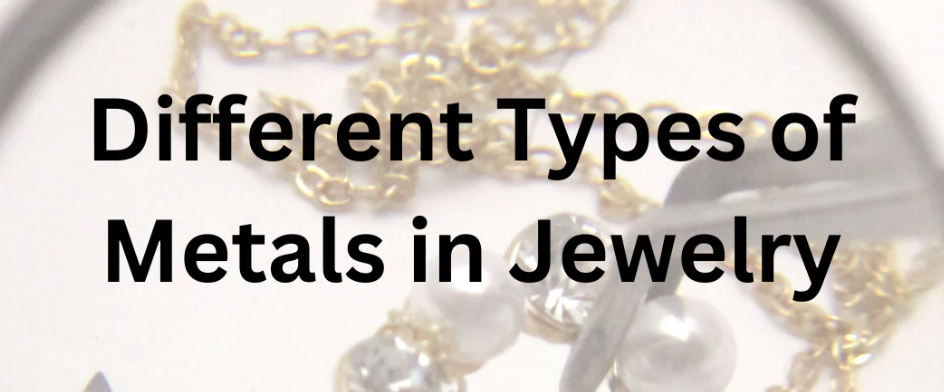
1. Gold (Yellow, White, and Rose)
Gold is a classic for a reason. Not only does it exude luxury, but it’s also relatively safe—depending on purity. Pure gold (24K) is very soft and rarely used alone in jewelry. Instead, you’ll usually find 18K, 14K, or 10K gold, which are mixed with other metals for strength.
- Yellow gold is usually mixed with silver and copper, making it one of the safer options if the gold content is high.
- White gold is typically mixed with nickel (yikes), but safer varieties are available with palladium or rhodium plating.
- Rose gold gets its pink hue from copper, which can irritate some people, but it’s generally mild.
Always look for higher karat gold (14K or above) if you have sensitive skin. For those with nickel allergies, rhodium-plated white gold or palladium-based white gold is the way to go.
Another tip? Avoid gold-plated jewelry unless you’re sure about the base metal—it often hides nickel or brass underneath.
2. Platinum
Platinum is like the Rolls Royce of jewelry metals. It’s luxurious, hypoallergenic, and extremely durable. Unlike gold, which is alloyed with other metals, platinum jewelry is usually 90–95% pure—making it an excellent option for sensitive skin.
What makes platinum special?
- Naturally white sheen – no plating required
- Non-reactive and corrosion-resistant
- Hypoallergenic, even for severe sensitivities
Yes, it’s more expensive. But it’s a long-term investment. Platinum rings, for example, resist wear and maintain their shine for decades. If you’re looking for the safest and most prestigious option, platinum takes the crown.
3. Silver (Sterling and Fine Silver)
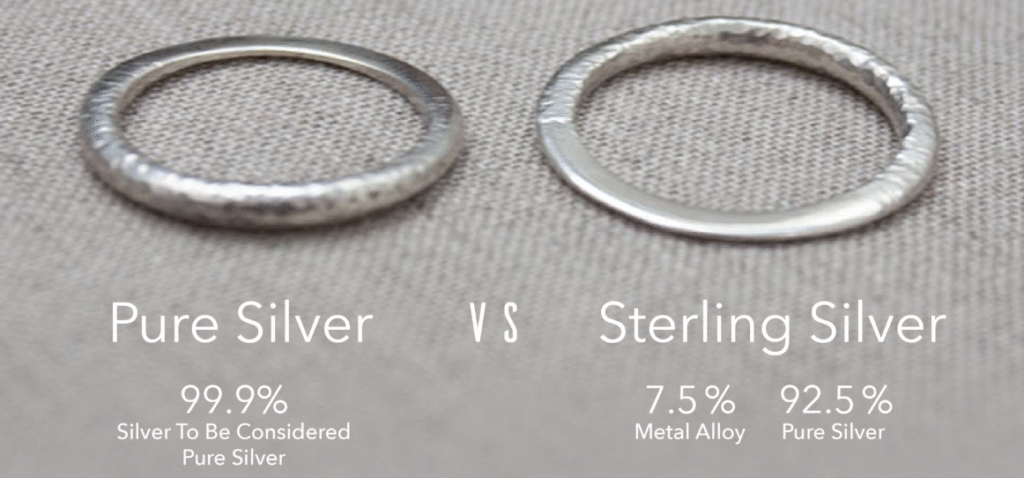
Silver is another popular and mostly safe option. But again, the purity level matters. Fine silver (99.9% pure) is too soft for most jewelry, so sterling silver (92.5% silver + 7.5% alloy metals, usually copper) is more common.
Sterling silver is generally safe for most people, especially when it’s nickel-free. The small amount of copper used in sterling silver usually doesn’t cause major issues, but some people may still react to it—especially with prolonged exposure or sweating.
Look for:
- “925” stamp (indicates sterling quality)
- Anti-tarnish coatings or rhodium plating for added protection
- Reputable sellers who disclose alloy details
Also, remember that cheap “silver-toned” jewelry is not real silver. Always confirm the metal content before buying.
4. Titanium
Titanium is a rising star in the jewelry world, especially among those with metal sensitivities. It’s strong, lightweight, corrosion-resistant, and—best of all—biocompatible.
Key benefits:
- Completely nickel-free in most cases
- Perfect for sensitive skin
- Commonly used in medical implants
Titanium’s sleek, modern look makes it especially popular in men’s rings and minimalist designs. While pure titanium is safe, be cautious of “titanium alloys,” which may include trace amounts of other metals. Always check for commercially pure titanium or grade 2 titanium for safety.
5. Palladium
Palladium is part of the platinum family, so it shares many of its benefits—like being hypoallergenic and naturally white. It’s lighter than platinum but still durable and luxurious.
Why palladium is a winner:
- Nickel-free and safe for sensitive skin
- Long-lasting, doesn’t tarnish
- Often used in white gold alternatives
Since it’s rarer than gold, it might be a bit pricey, but it’s worth considering if you want a metal that combines elegance with skin-friendliness. Palladium is becoming increasingly popular in wedding rings and high-end designer jewelry.
Hypoallergenic Alloys and Safe Alternatives
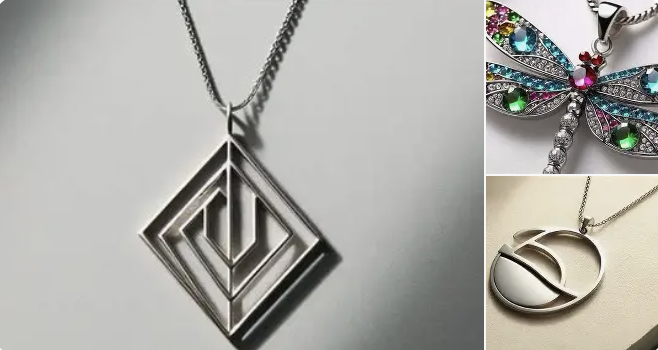
6. Surgical Stainless Steel
When you hear “surgical stainless steel,” think medical-grade safety. This metal is widely used in body jewelry, earrings, and even medical implants—and for good reason. It’s tough, corrosion-resistant, and has a sleek, modern look that suits just about any style.
Surgical stainless steel usually comes in grades like 316L or 316LVM, both of which are considered the best for people with sensitive skin. These alloys contain trace amounts of nickel, but the nickel is tightly bound within the metal matrix. That means it’s less likely to leach out and cause an allergic reaction.
Here’s why it’s a favorite among both jewelers and dermatologists:
- High durability — ideal for long-term wear
- Low maintenance — resists tarnishing and scratching
- Affordable — offers great value for its safety level
Still, if you have a severe nickel allergy, it’s best to patch-test or opt for a nickel-free alternative like titanium or niobium. But for most people, surgical steel is one of the safest bets in the affordable jewelry category.
7. Niobium
Niobium might not be as well-known as gold or silver, but it deserves the spotlight—especially for anyone dealing with serious metal allergies. This element is naturally hypoallergenic, corrosion-resistant, and completely nickel-free, making it one of the most skin-friendly metals you can wear.
What sets niobium apart is its ability to be anodized into different colors without using any dyes or coatings. This creates vibrant blues, purples, and greens that are ideal for funky, artistic jewelry designs.
Why niobium rocks:
- Perfect for sensitive ears and fresh piercings
- No risk of flaking, chipping, or peeling
- Naturally inert — doesn’t react with body fluids or sweat
You’ll often find niobium in artisan-crafted earrings, body jewelry, and minimalist rings. It’s a bit more niche, but worth exploring if traditional metals give you trouble.
8. Cobalt Chrome
Cobalt chrome isn’t just for aerospace parts—it’s also making a name for itself in the jewelry industry. This alloy is made from cobalt and chromium, giving it an incredibly hard, bright-white finish that’s similar to platinum but much more affordable.
Although cobalt by itself can be allergenic, cobalt chrome alloy is highly stable and biocompatible, meaning it rarely causes skin issues. It’s also extremely resistant to wear, which makes it ideal for wedding bands and daily-wear rings.
Here’s the lowdown:
- Hypoallergenic for most people
- Bright, mirror-like finish
- Durable and scratch-resistant
If you love the look of white gold or platinum but don’t want to spend a fortune—or risk irritation—cobalt chrome might be the ideal compromise.
9. Argentium Silver
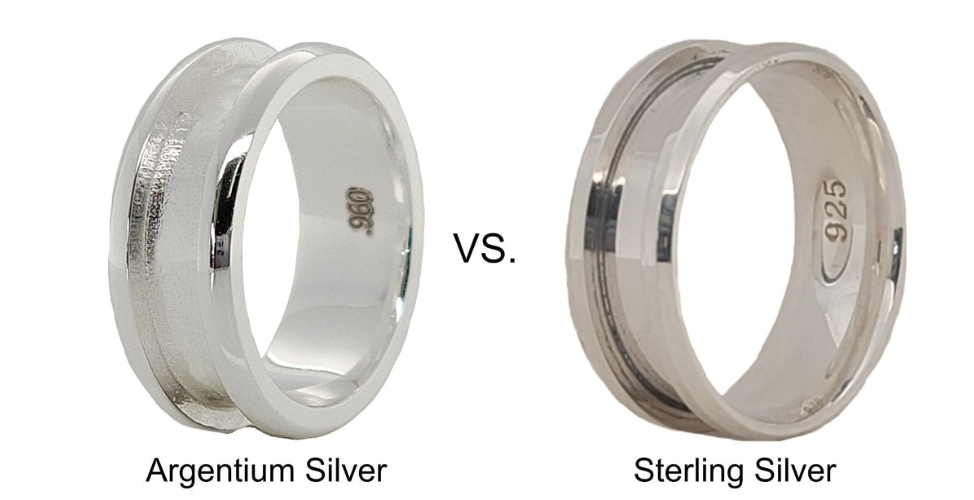
Standard sterling silver is about 92.5% silver and 7.5% copper. But Argentium silver steps it up a notch with a new formula: it replaces part (or all) of the copper with germanium, creating a metal that’s more tarnish-resistant, brighter, and hypoallergenic.
Why go for Argentium?
- Nickel-free and gentler on the skin
- Less tarnishing than regular sterling
- Easier to clean and maintain
Argentium silver still has that classic silver shine, but it’s a more modern, higher-performance option. Jewelers are increasingly switching to Argentium because it’s environmentally friendly, safer for sensitive users, and just as versatile as traditional silver.
10. Tungsten Carbide (Nickel-Free)
Tungsten carbide is one of the hardest materials used in jewelry—second only to diamonds in scratch resistance. While some tungsten carbide rings contain small amounts of nickel, the nickel-free versions are incredibly safe for sensitive skin.
Key benefits:
- Extremely durable and scratch-resistant
- Available in both polished and matte finishes
- Hypoallergenic when nickel-free
Nickel-free tungsten carbide is often marketed for men’s wedding bands due to its rugged appearance and resilience. Be aware that not all tungsten carbide is created equal, so always confirm that the product is labeled nickel-free or cobalt-free to avoid irritation.
One drawback: tungsten rings can’t be resized due to their hardness. But for many, the trade-off is worth it for a stylish, low-maintenance piece that’s safe to wear every day.
Organic and Non-Metal Jewelry Options

In some cases, avoiding metal altogether is the safest route. Organic and synthetic materials can provide beautiful, allergy-free alternatives.
11. Wood and Bone
Wood and bone jewelry offer a natural, eco-friendly, and hypoallergenic alternative to metal. These materials are often handcrafted and polished to be smooth and skin-safe.
Popular in tribal, boho, and ethnic-inspired designs, they are lightweight and gentle on the skin. However, ensure the items are sealed properly and not chemically treated, as that could introduce allergens.
12. Silicone and Resin Jewelry
Silicone and resin are non-metal materials that are increasingly used in fashion-forward, hypoallergenic jewelry. Silicone is flexible, lightweight, and nickel-free, ideal for those with active lifestyles or for use in sports jewelry.
Resin can be molded into creative shapes and colors, offering a wide range of aesthetic possibilities. Just ensure it’s BPA-free and non-toxic, especially for prolonged skin contact.
Specialty Safe Metals for Sensitive Skin
For those looking for elegance and hypoallergenic features, specialty-plated or coated metals offer both beauty and safety.
13. Rhodium-Plated Jewelry
Rhodium, a member of the platinum family, is one of the most precious and hypoallergenic metals in existence. Jewelry that’s rhodium-plated—typically over white gold or silver—offers a bright, mirror-like finish and added protection against skin irritation.
This coating creates a barrier between the skin and potential allergens in the base metal. However, it can wear over time, so regular re-plating may be required to maintain its hypoallergenic quality.
14. Vermeil (Gold over Sterling Silver)
Vermeil (pronounced ver-may) is a luxurious yet skin-friendly option consisting of a thick layer of gold (at least 2.5 microns) plated over sterling silver. Unlike standard gold-plated jewelry that may use cheap base metals, vermeil uses precious metals only, making it safer for sensitive skin.
Look for 18k gold vermeil for the best results—it offers a rich appearance with minimal risk of irritation.
15. Aluminum Jewelry
Aluminum is a lightweight, non-toxic, and nickel-free metal that doesn’t tarnish or rust. It’s also highly malleable, allowing for creative designs in earrings, cuffs, and statement pieces.
While not as common in fine jewelry, it’s an excellent option for people with metal sensitivities seeking affordable and safe accessories.
Conclusion
Choosing the right jewelry when you have sensitive skin or metal allergies doesn’t have to be difficult. By selecting from these hypoallergenic alloys, organic alternatives, and specialty safe metals, you can enjoy beautiful pieces without the worry of skin reactions.
Always purchase from reputable jewelers and verify the composition of the metal to ensure it aligns with your sensitivity needs. With careful selection, style and comfort can absolutely go hand-in-hand.
FAQs About Jewelry Metals
What jewelry metals are best for sensitive skin?
The best metals for sensitive skin include niobium, titanium, surgical stainless steel, platinum, and Argentium silver. These materials are naturally hypoallergenic or designed to reduce allergic reactions.
Is stainless steel safe for everyday wear?
Yes, particularly 316L surgical stainless steel is safe for everyday wear. It’s durable, corrosion-resistant, and contains low nickel content, which makes it suitable for most individuals with sensitive skin.
Are there any truly nickel-free metals?
Yes, niobium, titanium, and aluminum are truly nickel-free metals. These materials are ideal for those with extreme nickel allergies or sensitivities.
How can I test if a metal is safe for me?
You can perform a patch test by taping the jewelry against your skin for 24–48 hours and monitoring for any reaction. Alternatively, consult a dermatologist for an allergy panel test.
What’s the difference between hypoallergenic and nickel-free?
Hypoallergenic means the material is less likely to cause an allergic reaction, but it may still contain trace allergens like nickel. Nickel-free means the metal contains no detectable nickel, making it safer for people with specific nickel allergies.

